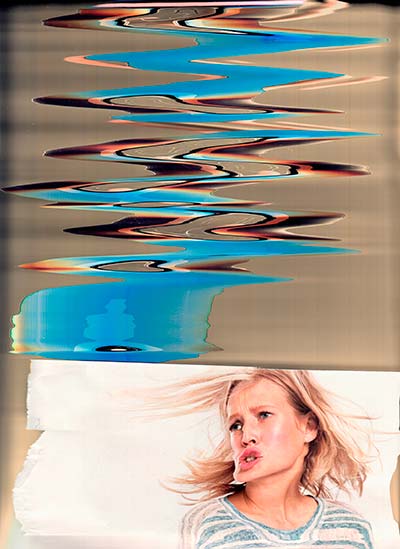
Every image he opened appeared distorted with misaligned pixels, the same way the screen of a TV with poor reception might look. “All of the photos were glitching by accident,” he says. “I thought it looked really cool.”
By definition, a “glitch” is a sudden, unexpected malfunction. In recent years, the term has taken on new meaning for “glitch artists” such as Visconti, who purposefully distort images digitally. “It’s a new media practice,” Visconti says. “You find errors that happen seemingly randomly, and you create an environment in which they can happen at your wish.”
In Visconti’s case, the defective memory card had changed the binary code of the digital photographs on it. He began applying the same technique to other images, adding zeros in their binary codes to see what would happen. Called “databending,” this technique manipulates an image’s digital DNA. The process, he says, is somewhat random and up to chance. “The art is finding these points of ruptures and exploring them creatively.”
At Amherst, Visconti majored in political science, which combined his interests in art, culture, history and economics. He also dabbled in photography and took portraits of his friends, which led to a career in commercial film and photography production.

His works have been published in Time, WIRED and elsewhere, and have been shown in art museums and festivals around the world, including Tate Britain and, most recently, the FILE Festival in his hometown of São Paulo, Brazil.
In 2016 he contributed an essay to The New York Times’ “American Dreamers,” a series of essays by young immigrants who benefited from the Obama administration’s 2012 Deferred Action for Childhood Arrivals, or DACA, program. He’s currently working on a series of glitch works titled DACALOGUE, inspired by his experience as a DACA recipient.
Visconti recalls one of the first pieces of glitch art he showed to his father. “Did your computer break?” his dad asked. Visconti responded, “I broke it on purpose.” Indeed, sometimes art is about finding the beauty in what’s broken.
SEE more images: sabatobox.com